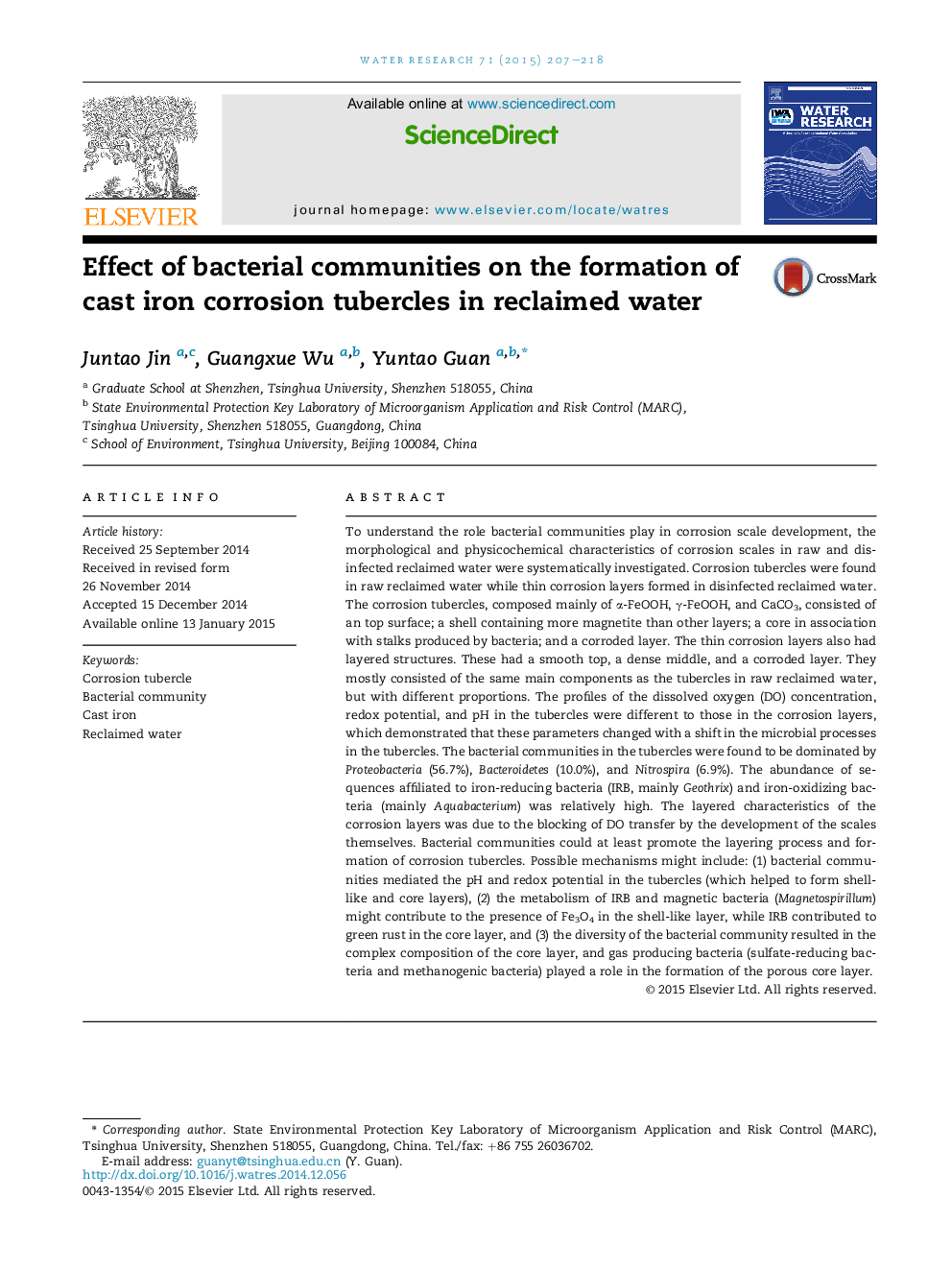| کد مقاله | کد نشریه | سال انتشار | مقاله انگلیسی | نسخه تمام متن |
|---|---|---|---|---|
| 4481180 | 1623097 | 2015 | 12 صفحه PDF | دانلود رایگان |
• The distinctive features of tubercles with bacteria were shell-like with core layers.
• Bacteria could at least promote formation of corrosion tubercles.
• The pH and redox potential mediated by bacteria help to form shell-like layers.
• The metabolism of IRB and magnetic bacteria contributed to Fe3O4 and green rust.
• The bacterial diversity related to the complexity and porosity of core layers.
To understand the role bacterial communities play in corrosion scale development, the morphological and physicochemical characteristics of corrosion scales in raw and disinfected reclaimed water were systematically investigated. Corrosion tubercles were found in raw reclaimed water while thin corrosion layers formed in disinfected reclaimed water. The corrosion tubercles, composed mainly of α-FeOOH, γ-FeOOH, and CaCO3, consisted of an top surface; a shell containing more magnetite than other layers; a core in association with stalks produced by bacteria; and a corroded layer. The thin corrosion layers also had layered structures. These had a smooth top, a dense middle, and a corroded layer. They mostly consisted of the same main components as the tubercles in raw reclaimed water, but with different proportions. The profiles of the dissolved oxygen (DO) concentration, redox potential, and pH in the tubercles were different to those in the corrosion layers, which demonstrated that these parameters changed with a shift in the microbial processes in the tubercles. The bacterial communities in the tubercles were found to be dominated by Proteobacteria (56.7%), Bacteroidetes (10.0%), and Nitrospira (6.9%). The abundance of sequences affiliated to iron-reducing bacteria (IRB, mainly Geothrix) and iron-oxidizing bacteria (mainly Aquabacterium) was relatively high. The layered characteristics of the corrosion layers was due to the blocking of DO transfer by the development of the scales themselves. Bacterial communities could at least promote the layering process and formation of corrosion tubercles. Possible mechanisms might include: (1) bacterial communities mediated the pH and redox potential in the tubercles (which helped to form shell-like and core layers), (2) the metabolism of IRB and magnetic bacteria (Magnetospirillum) might contribute to the presence of Fe3O4 in the shell-like layer, while IRB contributed to green rust in the core layer, and (3) the diversity of the bacterial community resulted in the complex composition of the core layer, and gas producing bacteria (sulfate-reducing bacteria and methanogenic bacteria) played a role in the formation of the porous core layer.
Bacterial communities could promote the layering process and formation of corrosion tubercles. Possible mechanisms might include: (1) bacterial communities mediated the pH and redox potential in the tubercles. (2) the metabolism of IRB and magnetic bacteria might contribute to the presence of Fe3O4 in the shell-like layer, while IRB contributed to green rust in the core layer, and (3) gas producing bacteria (sulfate-reducing bacteria and methanogenic bacteria) played a role in the formation of the porous core layer.Figure optionsDownload high-quality image (230 K)Download as PowerPoint slide
Journal: Water Research - Volume 71, 15 March 2015, Pages 207–218
